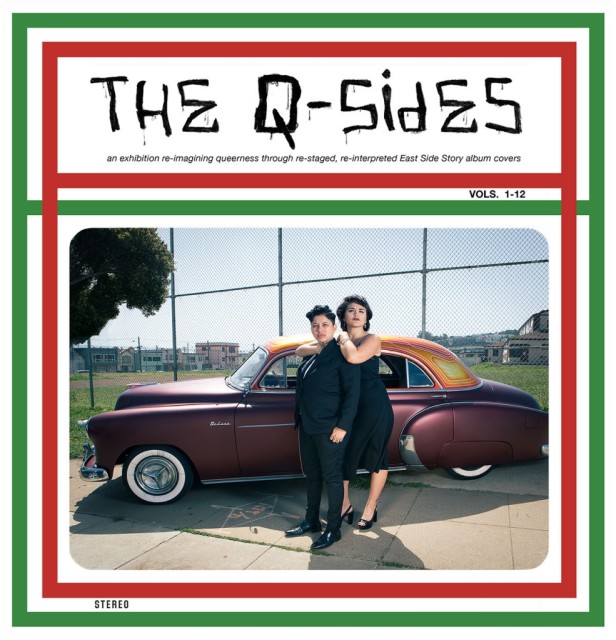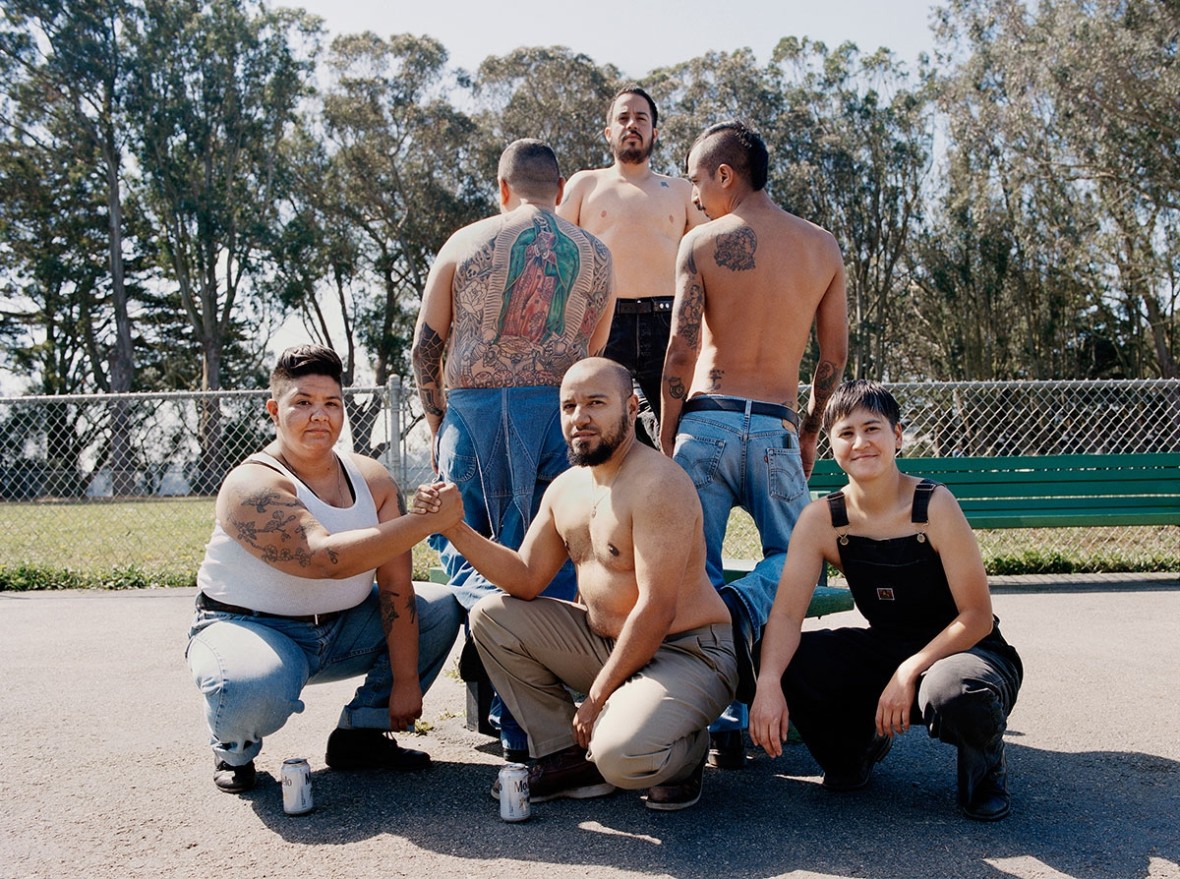San Francisco’s Mission District has a long legacy of lowrider culture, a rich history artist Vero Majano has documented and celebrated through film for almost two decades. Yet, as a queer woman living on the periphery of a traditionally male-hetero dominated community, Majano never quite saw herself represented in the scene. The Q-Sides, a collaborative art project between Majano, photographer Kari Orvik and Hard French DJ Amy Martinez (aka DJ Brown Amy), brings imagined queer inclusion and celebration to recreated album covers of the East Side Story anthologies.
“Growing up in the eighties, every weekend was a parade of lowriders cruising up and down Mission Street, oldies serenading everyone on the streets,” says Majano. “It was a beautiful street culture. Groups would claim their corners with jackets that said Sir Locos, Slick Frisco Chicks, Santa Locas, and I would be standing on the curb, watching — not necessarily included — in my black Sir Jacket that had ‘La Shorty de San Fran’ embroidered in cursive letters on the back. Being queer is the only thing I’ve ever been sure about in my life, but I knew enough at the time that it wasn’t cool to let the Santa Locas homegirls know I thought they were fine.”

“What draws me to the culture more then anything else is the music, it’s what I’ve fallen in love to, what I go to when I feel heartbreak and what reminds me of my childhood,” adds Martinez. “I think it is important to celebrate lowrider culture in the context that Q-Sides has because there is not a ton of queer representation within the culture. When I was a kid I desired to be that homeboy with the car and girl by his side and this project has made that desire a reality. It goes really deep for me.”
That feeling of longing saturates Kari Orvik’s photography. She, Majano and Martinez faithfully staged each image in canny mergers of queer and lowrider culture.
“The Q-Sides photographs are not necessarily any one person’s fantasy, but they open the door to the possibility of inserting your fantasy in place of a more traditional narrative,” says Orvik. “I think that growing up you can have a sense that you don’t see what you desire reflected in your environment. Even if you don’t know exactly who or what you are looking for, it can feel like there’s no place for your desire. We wanted to represent a spectrum of queer culture in these photographs that opens the door to those possibilities.”
The three admit they hesitated slightly when setting out to collaborate with some of the local clubs. But despite the project’s focus on queer culture, the lowrider clubs were happy to provide vehicles for photo shoots. Many of those cars will be on display at the Jun. 5 opening reception at Galería de la Raza.

“All of the folks in the car clubs have been so wonderful to work with and excited about what we are doing. This could not have happened without them,” says Martinez.
To balance against the fantasy aspect of the Q-Sides images, Dino Dinco’s Homeboy, a documentary about queer Latino gang life, screens at the opening as well.
More than wish fulfillment, The Q-Sides is a celebration of a rich history Majano remembers well.
“I’ve kind of always been visualizing something like this in my mind,” she says. “When I used to go to ‘You and I’ dances in the Mission in the eighties, I was a wallflower — younger than most people there — and I would watch the homies and homegirls slow dancing to oldies like “I Love You For All Seasons” by The Fuzz, and imagine that I was the one dancing with the girl.”